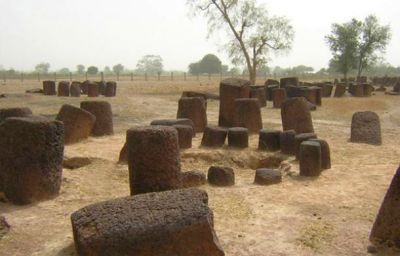AncientOrigins May 18 2014

Throughout human history, mankind has been passionate about building impressive monuments. Very often, this is achieved by building something that is the largest, highest, longest, most expensive, etc. in the world. Nevertheless, some less imposing monuments, rarely given the same attention, are also of great architectural and technological achievement. Take the Senegambian Stone Circles, for instance. On average, the stones forming these circles are 2m in height and weigh up to 7 tons each. Although these are not massive structures like those of Stonehenge in England or the Great Pyramids of Egypt, the incredible feature of the Senegambian Stone Circles is that there are more than 1000 of them spread over an area that is 100 km wide and 350 km in length. Now, this is a truly remarkable achievement.
The Senegambian Stone Circles can be found in West Africa, in the modern countries of Gambia and Senegal. Of the 1000 stone circles, 93 of them have been inscribed on UNESCO’s World Heritage List. These include the Sine Ngayène complex in Senegal, as well as the Wanar, Wassu and Kerbatch complexes in Gambia. Apart from these stone circles, the sites also contain numerous tumuli and burial mounds. According to the material obtained from the archaeological excavations of some of these features, the stone circles have been dated to between the 3rd century B.C. and the 16th century A.D. This suggests that the stone circles were built gradually over a long period of time, which perhaps reflects a tradition that was kept for almost two millennia.
To construct these stone circles, the ancient builders were first required to identify suitable lateritic outcrops for the carving of the stones. Although this stone is common in the region, great knowledge of the local geology was required to find the best laterite. Having found the suitable laterite, one would then have to cut and extract the stone from the quarry. This was no easy feat as the stones needed to be extracted in one piece. At quarry sites, monoliths that were broken in the course of extraction were of no value and were left there.
These broken monoliths show traces of microscopic cracks which may have caused them to fragment while being extracted. Therefore, great skill was required when cutting and extracting these stones. Finally, the extracted monoliths were transported and erected at various sites along the River Gambia. This final process suggests that there was a social organisation in place that was able to mobilise the manpower required for this task. Imagine this process being repeated for tens of thousands of monoliths, and you get a sense of the massive scale of the Senegambian Stone Circles.
See more at: http://www.ancient-origins.net/ancient-places-africa/incredible-senegambian-stone-circles-001661
